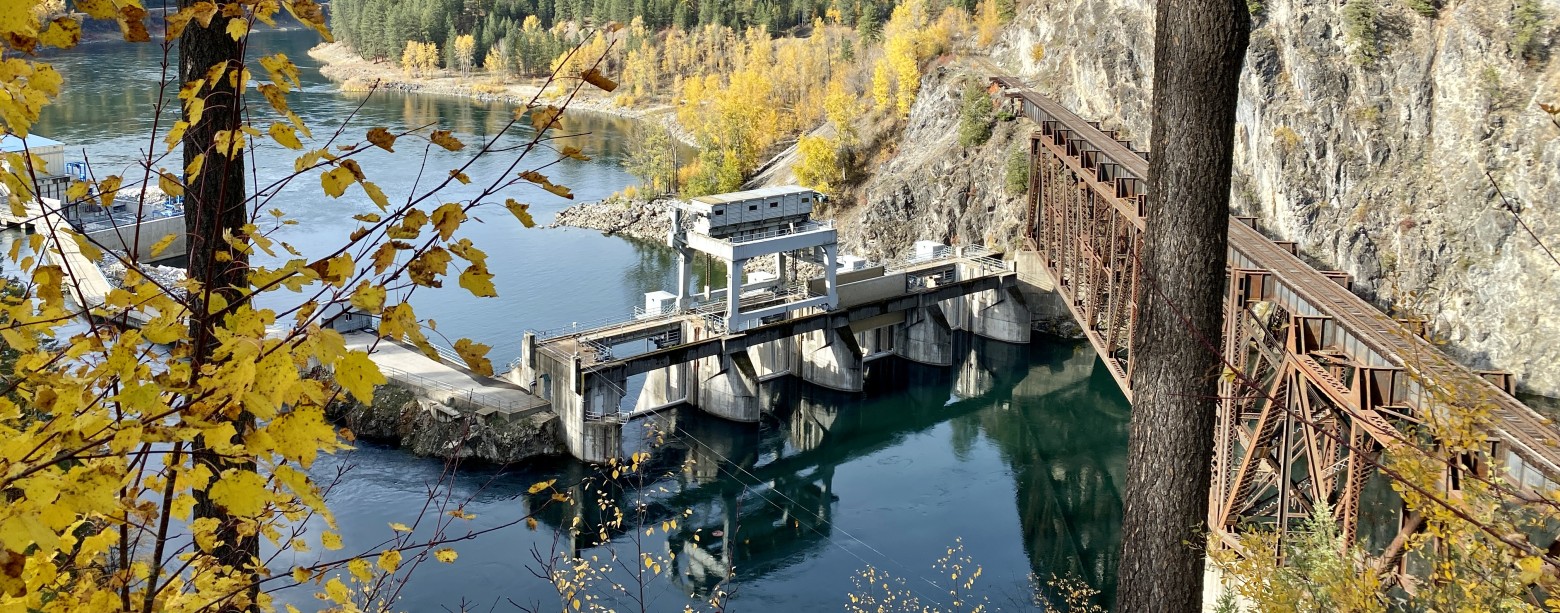This webpage is dedicated to information surrounding the PUD's Power Transaction with Clark Public Utility District
Press Releases
October 18, 2022: Pend Oreille PUD and Clark Public Utilities Sign Long-Term Hydropower Agreement
Frequently Asked Questions & Answers
Updated: November 30, 2022
Pend Oreille PUD has received several questions from customers about its recent sale of Box Canyon power to Public Utility District No. 1 of Clark County (“Clark Public Utilities” or “Clark”), and what that means for the community. The below aims to address some of those questions.
Question: What are the basics of the PUD’s recent power sale to Clark Public Utilities?
On October 18, 2022, Pend Oreille PUD and Clark Public Utilities executed a long-term power sales agreement that provides Clark with all output of Box Canyon Dam from January 1, 2026, through at least December 31, 2041. In exchange, Clark will pay the PUD for the forecasted costs of Box Canyon Dam, plus additional value for the environmental attributes of power generated from Box Canyon.
Question: Why did the PUD decide to sell Box Canyon power outside of the county?
In 2021, the PUD’s Board of Commissioners held a series of public workshops and meetings to establish the PUD’s strategic plan for the next five years. Our 2021-2025 plan identified the PUD’s internal hydroelectric resources as both a strength and a weakness. This had a lot to do with the threats of energy price volatility in the northwest, as well as regulatory and legislative uncertainty. The response was a strategic goal to optimize a post-2025, long-term power sale agreement with a creditworthy counterparty that mitigated those risks. After evaluating a number of potential counterparties, Clark was selected as the ideal long-term purchaser. This contract gives the PUD and its ratepayers full recovery of projected Box Canyon costs, plus additional value for the environmental attributes of Box, and allows for rate stability for general service customers.
Question: Are the PUD’s customers currently consuming Box Canyon power?
No, the PUD is currently selling all output of Box Canyon Dam, and most of its Boundary assignment power from Seattle City Light, to Shell Energy North America (US), L.P. (“Shell”) under a five-year agreement that expires December 31, 2025. Shell is providing a return amount of power shaped to the PUD’s forecasted general service load over the five-year period, and pays the PUD for the net value of the PUD’s hydroelectric resources. Historically, little if any power from Box Canyon was allocated to serve the PUD’s general service customers. Following expiration of the Shell agreement, it is anticipated that Boundary assignment power will be utilized to serve the general service load.
Question: Will the sale of Box Canyon power have an impact on economic development?
Yes, the sale will allow for positive long-term rate stability and overall financial strength. Despite the historic agreement with Ponderay Newsprint Company, industrial customers are not generally interested in cost-plus power supply agreements for a run-of-river generating project that involves substantial market and system risk transference. The District, however, can still serve new industrial customers with competitively priced market power.
Question: How are Box operating costs mitigated long term?
Clark has committed to pay all fixed costs (including long-term debt principal and interest) in accordance with a fixed schedule, and variable costs (such as operations and maintenance) using a baseline number adjusted annually by an inflationary escalator. The PUD is well protected against rising costs by the application of this annual inflationary escalator on variable costs. The PUD is guaranteed at least a 1% annual increase, and a maximum annual increase of 6%. In the 70 years since Box Canyon was first licensed, annual inflation has exceeded that cap only nine times. The PUD has a long history of managing costs by deferring non-critical projects to minimize the effects of any unusual inflation, as we have done this year, and by maintaining strong strategic reserves.
Question: Why are the environmental attributes of Box Canyon especially valuable now?
Historically, little value was given to the environmental attributes of a hydro project. However, with the implementation of Washington’s Clean Energy Transformation Act, utilities are scrambling to line up their compliant zero-carbon resources in advance of the next decade. We have to strike while the iron is hot. Now is the time to optimize the long-term value of Box Canyon’s environmental attributes, as the current demand for carbon-free resources may wane over the coming years, as utilities finalize long-term resource commitments.
Question: How is operational risk mitigated?
The best way to manage operational risk is through prudent maintenance practices. Our crews do a fantastic job maintaining the fully modernized Box Canyon project in order to avoid the risk of long-term outages. However, if an outage did last more than 120 days and Clark chose to terminate the contract, this would be a clean walkaway with no termination payment owed by the PUD. It’s important to remember that we would carry that long-term outage risk whether or not we entered into this contract.
Question: How does the Boundary Agreement fit into the PUD’s long-range resource plan?
The PUD will continue to serve its general service load (i.e., all residential, commercial, and small industrial customers) with Boundary power, which runs at least through 2055. Large industrial customers will be served primarily with market resources, as they are now.
For a PDF of the FAQs, click here: Power Transaction with Clark Public Utilities - FAQs
